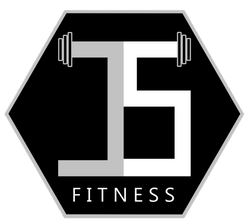
USE IT OR LOSE IT: Muscle mass deterioration for men over 30 and why strength training is so important
Muscle mass deterioration, also known as sarcopenia, begins gradually in men around age 30 and accelerates with age if no intervention is taken.
Here’s what you need to know:
Rate of Muscle Loss
- Men lose about 3–8% of muscle mass per decade after 30.
- After 50, the rate increases, with potential losses of 1–2% per year
Causes of Muscle Deterioration
1. Hormonal Changes
- Testosterone Decline: Testosterone helps build and maintain muscle; levels drop about 1% per year after 30.
- Growth Hormone Reduction: This hormone supports muscle growth and fat metabolism, and its production declines with age.
2. Reduced Physical Activity
3. Poor Nutrition
4. Decreased Protein Synthesis
5. Neuromuscular Decline
What can we do to prevent this?
Strength training is the best way to slow down or even reverse muscle mass deterioration in men over 30. Here's how it impacts your body:
1. Prevents & Reverses Muscle Loss
- Lifting weights signals your body to maintain and build muscle instead of breaking it down.
- Studies show resistance training can increase muscle mass even in men over 60.
2. Boosts Testosterone & Growth Hormone
- Compound exercises like squats, deadlifts, and bench presses spike testosterone levels, which helps with muscle maintenance.
- Growth hormone release is triggered during intense workouts, supporting muscle recovery and fat loss.
3. Improves Protein Synthesis
- Strength training increases muscle protein synthesis (MPS) for up to 48 hours post-workout.
- When paired with high-protein intake, this leads to muscle retention and growth.
4. Enhances Neuromuscular Function
- Lifting weights strengthens the nervous system, keeping motor neurons active and preventing age-related muscle weakness.
- Improves coordination, reaction time, and overall functional strength.
5. Increases Metabolism & Fat Loss
- More muscle = higher resting metabolic rate (RMR), meaning you burn more calories even at rest.
- Helps combat age-related fat gain and maintains a lean physique.
6. Strengthens Bones & Joints
- Resistance training stimulates bone density, reducing the risk of fractures and osteoporosis.
- Strengthens connective tissues, lowering the chances of injuries.
How to Train for Maximum Impact
- Focus on Compound Lifts (Squats, Deadlifts, Bench Press, Rows, Overhead Press)
- Train at Least 3–4x per Week (Full-body or Upper/Lower Splits)
- Progressively Overload (Increase weights/reps over time)
- Eat Enough Protein (1.2–2.0g per kg body weight)
- Prioritise Recovery (Sleep 7–9 hours, manage stress)




